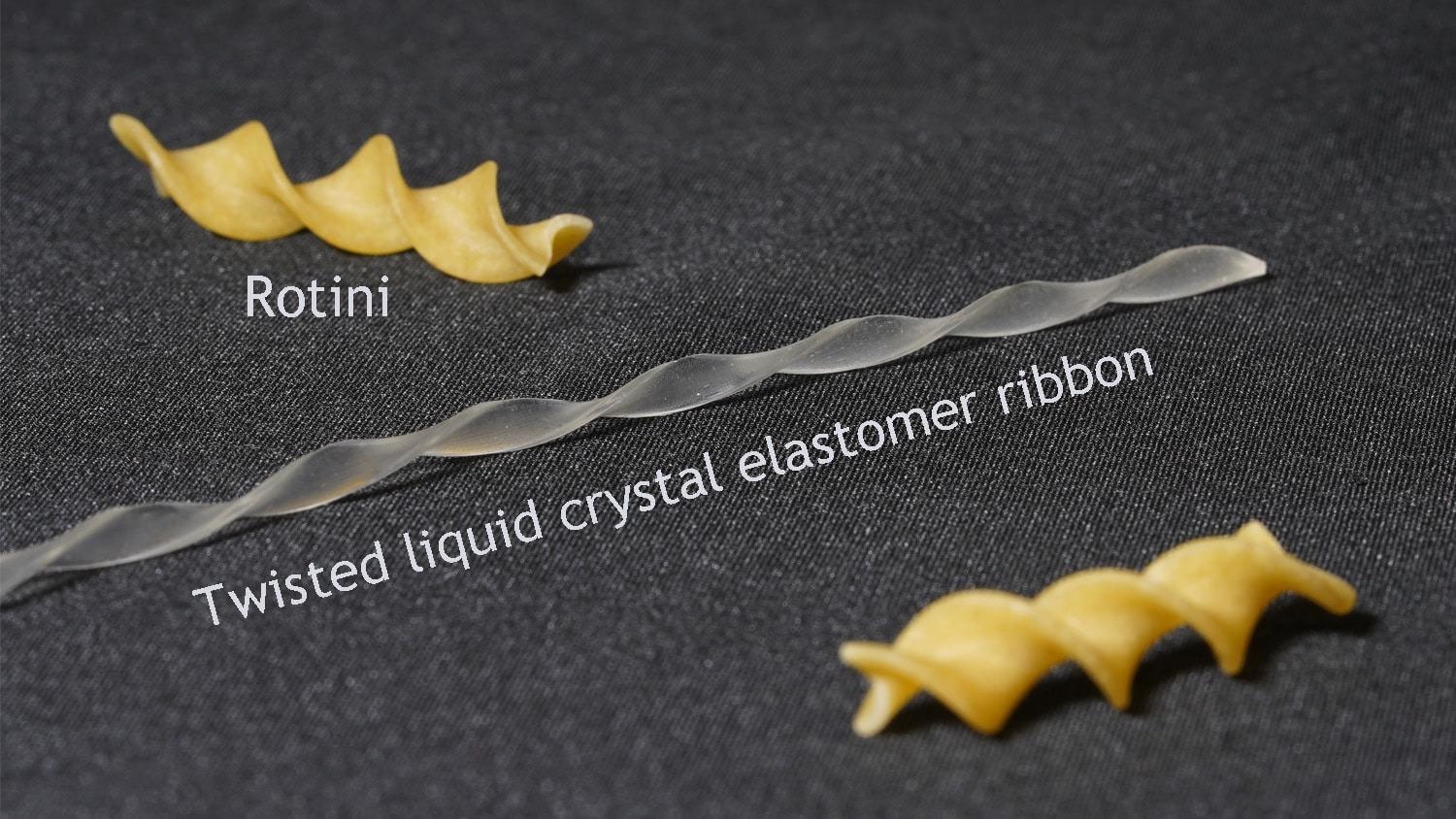Soft robots designed by North Carolina State University and the University of Pennsylvania are capable of crossing difficult settings such as mazes without the assistance of people or computer software.

Image Credit: North Carolina State University.
These soft robots demonstrate a concept called ‘physical intelligence,’ meaning that structural design and smart materials are what allow the soft robot to navigate various situations, as opposed to computational intelligence.
Jie Yin, Study Corresponding Author and Associate Professor, Mechanical and Aerospace Engineering, North Carolina State University
The soft robots are built of translucent rotini-like liquid crystal elastomers in the form of a twisted ribbon. When users set the ribbon on a surface that is at least 55 °C (131 °F) hotter than the ambient air, the portion of the ribbon that touches the surface compresses, while the portion exposed to the air does not. The ribbon begins to roll as a result of something like this. The quicker it rolls, the hotter the surface.
Video of the ribbon-like soft robots is available at https://youtu.be/7q1f_JO5i60.
This has been done before with smooth-sided rods, but that shape has a drawback – when it encounters an object, it simply spins in place. The soft robot we’ve made in a twisted ribbon shape is capable of negotiating these obstacles with no human or computer intervention whatsoever.
Jie Yin, Study Corresponding Author and Associate Professor, Mechanical and Aerospace Engineering, North Carolina State University
This is accomplished in two ways by the ribbon robot. When one end of the ribbon meets an object, it turns slightly to avoid it. Second, when the robot’s primary portion encounters an object, it “snaps.”
The snap is a sudden release of deformation energy that causes the ribbon to bounce and realign before landing. The ribbon may have to break several times before finding a configuration that enables it to navigate the obstacle, but it always discovers a clean direction in the end.
In this sense, it’s much like the robotic vacuums that many people use in their homes. Except the soft robot we’ve created draws energy from its environment and operates without any computer programming.
Jie Yin, Study Corresponding Author and Associate Professor, Mechanical and Aerospace Engineering, North Carolina State University
Yao Zhao, first author of the paper and a postdoctoral researcher at NC State says, “The two actions, rotating and snapping, that allow the robot to negotiate obstacles operate on a gradient.”
“The most powerful snap occurs if an object touches the center of the ribbon. But the ribbon will still snap if an object touches the ribbon away from the center, it’s just less powerful. And the further you are from the center, the less pronounced the snap, until you reach the last fifth of the ribbon’s length, which does not produce a snap at all,” Zhao adds.
The researchers ran a series of tests to show that the ribbon-like soft robot can navigate a variety of maze-like situations. The scientists also illustrated that the soft robots could function well in desert conditions, demonstrating that they could climb and slide down loose sand slopes.
“This is interesting, and fun to look at, but more importantly it provides new insights into how we can design soft robots that are capable of harvesting heat energy from natural environments and autonomously negotiating complex, unstructured settings such as roads and harsh deserts,” Yin says.
The National Science Foundation funded the research through grants CMMI-2010717, CMMI-2005374 and DMR-1410253.
Journal Reference:
Zhao, Y., et al. (2022) Twisting for soft intelligent autonomous robot in unstructured environments. Proceedings of the National Academy of Sciences. doi.org/10.1073/pnas.2200265119.